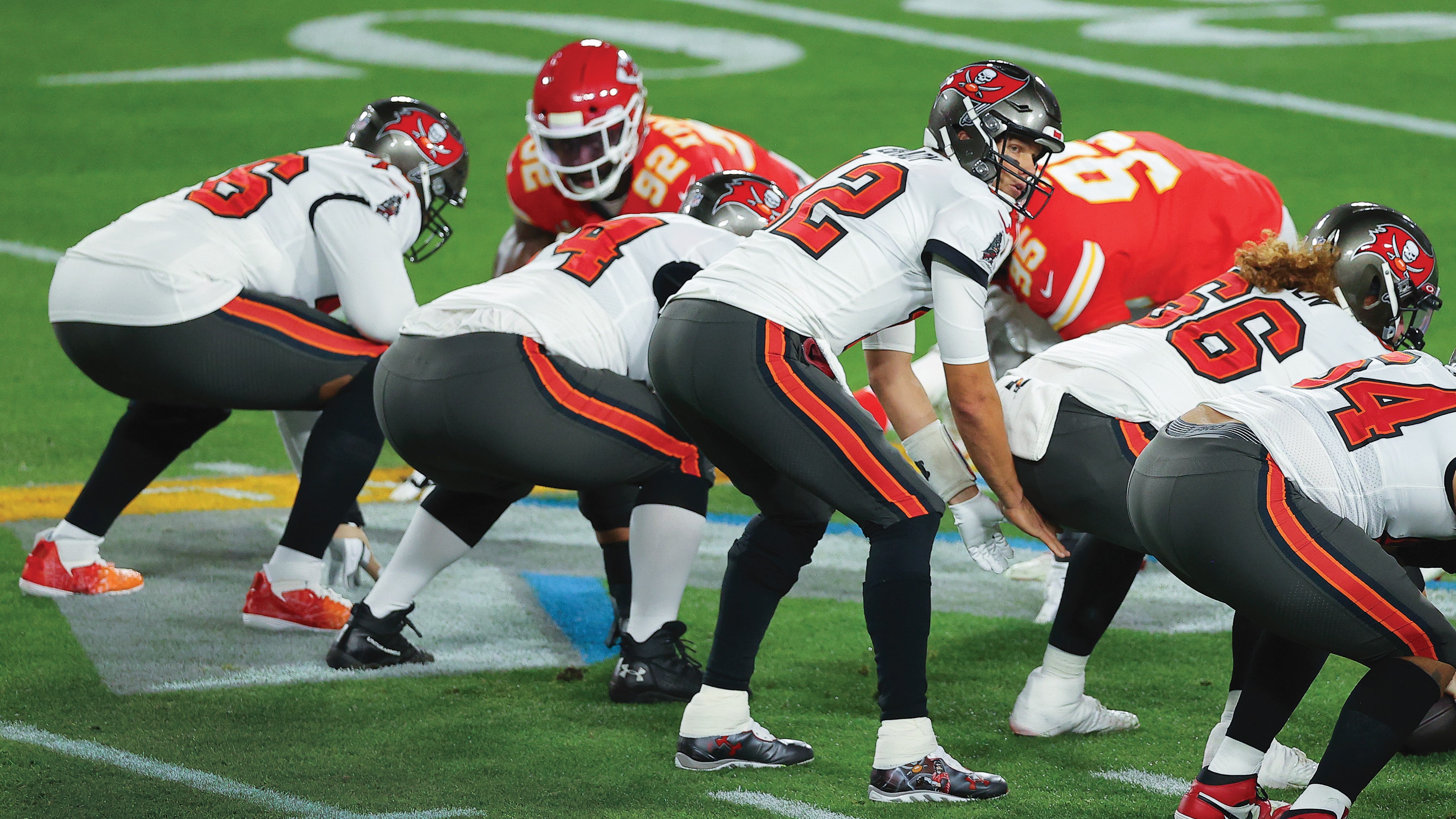Hard Choices: Sports and OTT
Streaming could squeeze the last vestige of appointment TV

NEW YORK—Notwithstanding the cratering of viewership in last month’s Super Bowl LV—which collapsed quicker than the Kansas City Chiefs’ offensive line—streaming services could be poised to snatch what has been the last vestige of appointment television: live sports, according to at least one influential analyst.
According to Nielsen, 96.4 million homes watched Super Bowl LV on TV, the lowest number since 2007. About 5.7 million homes streamed the game, the highest level for that metric ever.
In a research note that was issued before those ratings numbers were released, MoffettNathanson media analyst Michael Nathanson pointed to the growing trend of younger viewers migrating to streaming video, and that it would likely mean that sports would have to follow them. Nathanson didn’t expect big tent sporting events like the Super Bowl or the World Series to switch exclusively online, but he said games from various professional and college sports leagues, a staple of cable networks like TBS, TNT and regional sports networks owned by teams, could be in danger.

“We would think that the NFL, NCAA, ‘March Madness,’ NBA and MLB Playoffs will remain the domain of broadcast and will have digital rights that are monetized via affiliated services like Paramount+, Peacock or ESPN+,” Nathanson wrote. “Fox, the odd man out without a paid OTT service, will have a decision to make about how they move forward.”
Fox bought entertainment streaming service Tubi last year, which offers free ad-supported movies and shows from several networks, including Fox, but doesn’t have a sports component. On Feb. 9, Fox said it expects Tubi to reach $1 billion in revenue over the next few years. In 2021, it anticipates revenue at the service will double to about $300 million.
WHERE THE VIEWERS ARE
Keeping tentpole sporting events on the four major broadcasters makes sense for now because that’s where the majority of viewers are. Even the worst-viewed Super Bowl in 14 years was watched on traditional TV by a nearly 20:1 margin over streaming.
But for nationally televised sports like the NHL, NBA, golf, tennis and college sports, the staples of sports-based cable channels, networks may have to make some hard choices soon, Nathanson continued, adding they may have to adopt a hybrid approach like Peacock and NBCU, putting a limited number of events across a smaller number of networks. That, Nathanson wrote, in turn “would mean the end of FS2, ESPNU, CBS Sports Networks and a greater number of games carried on OTT products also now including HBO Max.”
Get the TV Tech Newsletter
The professional video industry's #1 source for news, trends and product and tech information. Sign up below.
Analysts have been warning that streaming services like Netflix, Amazon Prime Video and the like could disrupt the televised sports business for years, but so far they have only dipped their toes in the sports business. But as new services emerge, they are beginning to pay attention to sports, and that should have linear networks worried.
In January, Peacock, Comcast NBCUniversal’s streaming offering, said it will assume sports programming from NBCSN at the end of the year, when that regional sports network shuts down.
Peacock also reached a deal with WWE, where its WWE Network streaming service will be available exclusively to Peacock subscribers for $4.99 per month (free to Comcast Xfinity customers, who also get Peacock premium for free). In addition, WWE renewed its licensing relationship with NBCU’s USA Network, which airs WWE’s Monday Night Raw.
Viewership on cable sports channels has been slipping as younger viewers cut the traditional pay-TV cord. ESPN has lost about 9% of its subscribers since 2015 because of cord cutting, while FS1 has lost 5% and the Golf Channel has dipped 11%, according to MoffettNathanson.
At the same time, overall time viewed on cable sports channels like ESPN and Fox Sports 2 has fallen a collective 5% since 2015. For some channels the drop is more pronounced— ESPN2 dropped 12% and ESPNU fell 11% in that time frame. Also during that period, remaining viewers are getting older. According to MoffettNathanson, 65% of all cable network viewers are over the age of 50.
“Obviously, if you are a sports league trying to build long-term connections with the next generation of fans, this is an increasingly terrifying outcome,” Nathanson wrote.
Nathanson pointed to both the WWE deal and the NBCSN closing as signs of a sea change in the industry.
“If a Comcast-owned network decides the economics of a standalone national sports network no longer makes sense, what does this mean for other national sports networks?” Nathanson wrote.
NOT EITHER/OR
Sports consultant Lee Berke, president and CEO of LHB Media & Entertainment, said that while the business is changing, it won’t necessarily be an either/or scenario. Berke believes that most sports networks won’t pick sides in the streaming wars, but will instead continue on a path toward multiplatform offerings.
“I don’t see pay TV going away. I don’t see sports going away on pay TV. I think you see less of it,” Berke said. “I think you see a more consolidated bundle of fewer networks, that are general interest, sports, entertainment and news. Even in the worst scenarios, they’re still going to have 50–60 million TV homes that are subscribers to these bundles. So there’s still value there. There’s an audience there.”
Berke added that networks will continue to beef up their direct-to-consumer services with sports. He pointed to ESPN+, which has added considerable content from its launch in 2018, and which he believes will be nearly indistinguishable from ESPN-proper in the next few years.
“You’ll see this sag in the pay-TV universe,” Berke said, adding that some sports will migrate to streaming services, some will revert to broadcast and some will remain on pay TV. “I think the key is there has to be a multiplatform strategy. The idea of a linear-only sports network just is not going to work going forward.”
Content companies already have started putting much of their linear content on their direct-to-consumer offerings. During the Super Bowl, ViacomCBS spent a lot of money on ads for its upcoming Paramount + launch, mainly showing shows that are already available on their linear channels.
Making all of a network’s linear content available to stream on a separate app hasn’t sat too well with distributors in the past, especially if the streaming app is priced lower than the rate the distributor is paying. That, Berke said, will have to be negotiated out.
“There will have to be a reckoning,” Berke said. Programmers will have to start making those decisions soon. Although streaming has obviously been a part of at least some sports rights deals—and the major broadcasters have already locked up Major League Baseball, PGA Golf and SEC Football agreements recently—there are still several left to negotiate.
According to Nathanson, ESPN’s MLB rights deals come due in 2022, as does NBC’s Premier League pact. In 2023, several NFL rights deals expire: ESPN’s Monday Night Football, Fox’s Thursday Night Football and Sunday NFC packages, NBC’s Sunday Night Football and CBS’s Sunday AFC football package. Also that year, Fox and ABC/ESPN’s Big Ten college football packages are set to be renegotiated.
Further out, ESPN’s and Fox Sports’ Pac-12 and ESPN’s UFC deals expire in 2024. In 2025, the NBA’s rights agreements with ABC/ESPN and TNT come due; as do Fox and NBC Sports pacts with NASCAR.
While streaming is expected to play a big role in those negotiations, and sports has come under fire for driving most of the rate increases for pay TV, Berke said he still expects a robust rights market.
“Because every technology, every new platform needs sports to drive subs, the key properties that are out there will have healthy increases in rights fees,” Berke said. “I think the NFL is going to come close to doubling.
“The NBA, which has acknowledged that the one issue they have is that they haven’t established a strong streaming presence in a sport that skews young, when their deals are up in 2025 they will go much more heavily into streaming platforms and direct-to-consumer,” Berke added. Because these media businesses will have multiple screens and multiple ways to make money, and because they need to drive subscribers across all of them, the rights fees will go up substantially.”
